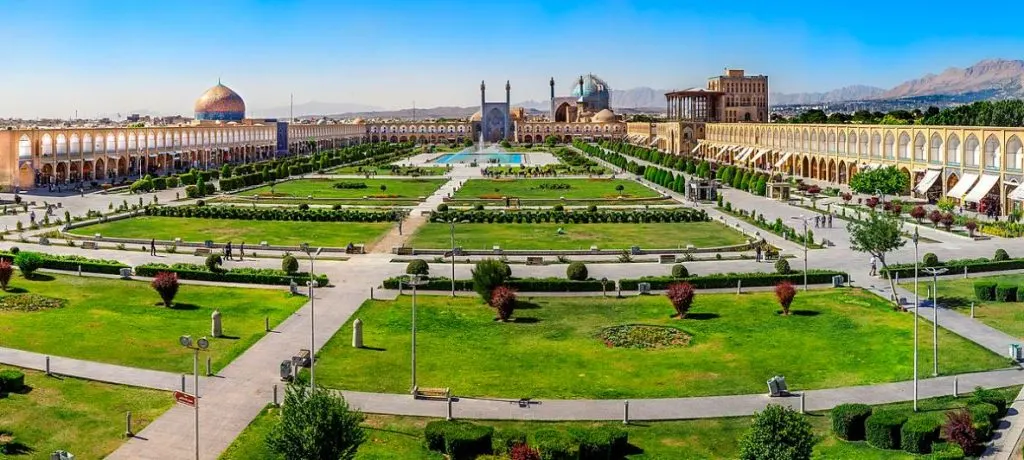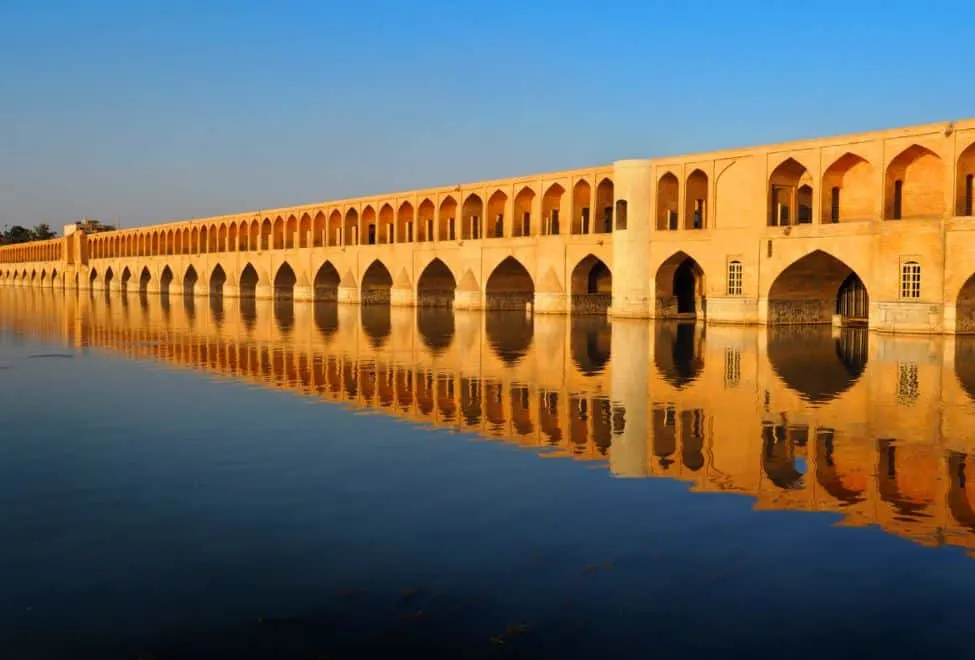One of the most picturesque bridges you’ll ever come across is located in a large city in central Iran.
In this article, you’ll discover the ultimate list of interesting facts about the Si O Se Pol Bridge, a structure with a remarkable story to tell.
1. It’s located on the largest river of the Iranian Plateau
The Si O Se Pol Bridge literally translates to “The bridge of Thirty-Three Spans,” and that’s literally the description of this fascinating bridge in Central Iran.
It crosses the Zayanderud River, the longest river on the Iranian Plateau with a total length of 400 kilometers (249 miles).
This fascinating structure is located right in the center of the city of Isfahan. This is the third-largest city in Iran with a population of 1.5 million inhabitants and nearly 4 million people in its metropolitan area.
The bridge is located right in the historic heart of this bustling city which was at one point in its history one of the largest cities in the world.

2. It’s one of the multiple historic bridges that cross this river
This particular bridge isn’t the only bridge located on the Zayanderud River as 11 historic bridges are spanning this river in Central Iran.
The oldest bridge is located in the city of Isfahan as well and is called the Shahrestan bridge, a pedestrian bridge that dates back to the 5th century.
This means that this bridge was completed during the Sasanian era (3rd to 7th century A.D.), also known as the “Neo-Persian Empire.”

This bridge is still in use, and even though it was seriously renovated during the 10th and 11th centuries, the architectural style is entirely Sassanian, quite remarkable to say the least!

3. It was built for a dual purpose in the early 17th century
The Si O Se Pol Bridge isn’t nearly as old but can still be considered a historic monument in the center of Isfahan. It was constructed between 1599 and 1602.
The main purpose of the bridge was to connect the wealthy sections of the city.
At the same time, it also connected the large and growing Armenian neighborhood known as “New Julfa” with the historic center of Isfahan.
The other purpose of the bridge, which was the purpose of many of the other historic bridges spanning this river as well, was to serve as a dam.

4. It’s a prime example of a particular Iranian architectural style
The bridge was completed about a century following the establishment of the Safavid dynasty which ruled over Iran between 1501 and 1731.
The ruler at the time was a man named King Abbas I (1571-1629), the fifth ruler of the dynasty.
what’s remarkable about the fact that it only took 3 years to complete this structure is that this isn’t a small bridge by any means.
It has a total length of 297.76 meters (976.9 feet) and a width of 14.75 meters (48.4 feet) and is entirely made of stone and brick.
It’s a prime example of the Safavid architectural style, an art movement that involved a lot more than architecture, including ceramics, metal, glass, and garden decorations.
The most famous example of this architectural style is the “Naqsh-e Jahan Square,” an incredible square that was constructed around the same time as the bridge between 1598 and 1621.

5. It was built under the supervision of a Georgian general
Even though the bridge is commonly referred to as the Si O Se Pol Bridge, the bridge’s official name is the “Allahverdi Khan Bridge.”
This is a reference to the man who supervised its construction, a man named Allahverdi Khan Undiladze, often referred to as simply Allahverdi Khan (1560-1613).
This was an Iranian general and statesman who was one of the main commanders of the Iranian military.
The name UNdiladze refers to the fact that he was born a Christian Georgian. He managed to climb up the ranks from the status of a “military slave” to a respected leader, a great achievement.
A bust of the man can be found standing next to the bridge that he helped build.

More interesting facts about the Si O Se Pol Bridge
6. Even though the bridge has a total of 33 spans, each of these spans is very short. The longest span of the bridge has a length of just 5.60 meters (18.4 feet).
7. The bridge is actually a double-deck bridge. The lowest deck gives a clear view of the architectural style used to build the arches.

8. The upper deck is a remarkable pedestrian walkway that provides great views of the Zayanderud River, the city of Isfahan, and its surroundings.
Even though most of the central part of the bridge is closed off, multiple observation platforms are integrated into the structure.

9. The main reason why a bridge like this could be built and could even be used as a dam is that the Zayanderud River isn’t navigable.
This means that the engineers didn’t have to take boat traffic into account, making building this remarkable bridge a whole lot easier.
10. The bridge is amazingly lighted at night, creating a unique atmosphere. This makes it the best time of the day to visit this fascinating monument.
It’s one of the most popular places in the city for people to gather and one of the best places to take pictures. And what an astounding view it is, don’t you think?

